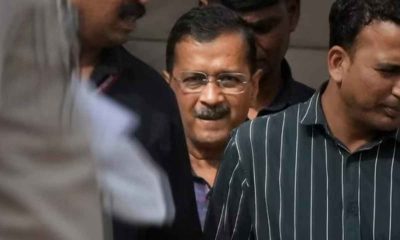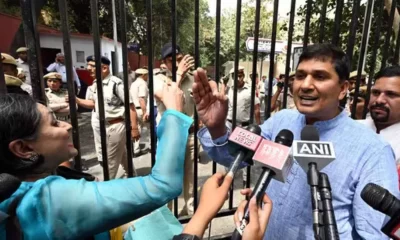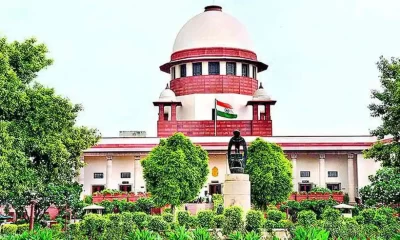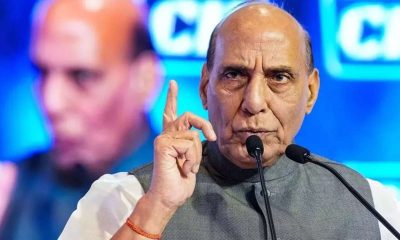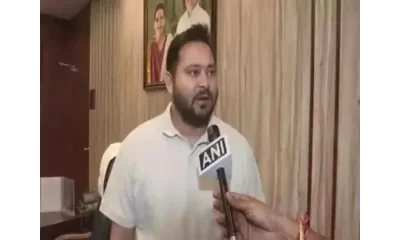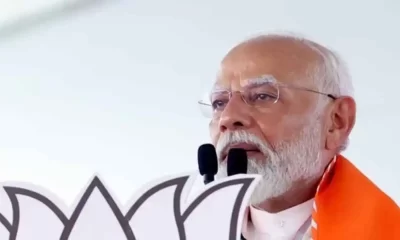India News
Govt files affidavit on Rohingyas in SC, maintains they are a threat to national security
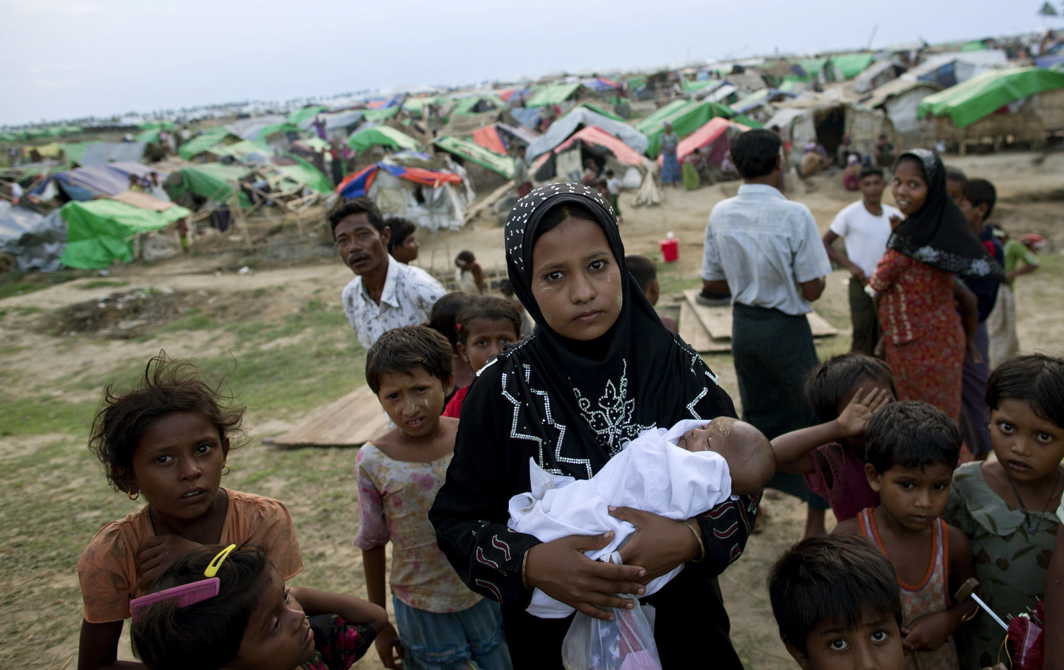
[vc_row][vc_column][vc_column_text]Contents of the affidavit filed, on Monday, are the same as those mentioned in the “incomplete” document that was “inadvertently” sent to lawyers last week
Three days after Union home minister Rajnath Singh and the Centre hurriedly claimed that an affidavit that termed Rohingya Muslims a “threat to national security” was “inadvertently” sent to lawyers representing two members of the ethnic minority in a deportation case in the Supreme Court and that it was “incomplete”, the Centre, on Monday, filed its affidavit which stuck to the claims made in the ‘leaked’ document.
The affidavit filed before the Supreme Court through Mukesh Mittal, joint secretary (foreigners) in the Union ministry of home affairs (MHA), maintains that Rohingyas are “a direct threat to national security” and urges the apex court to “decline its interference leaving to the Central Government to exercise its essential executive function by way of a policy decision in larger interest of the country (sic)” to pave the way for deporting nearly 40000 Rohingya refugees back to Myanmar.
The government has stuck to its claim that the Rohingyas – one of the world’s most persecuted ethnic minorities – are “illegal immigrants” and should be sent back to Myanmar.
The Rohingyas have been fleeing Myanmar for decades and the exodus has seen a marked increase over the past few months amid reports of mass killings of the ethnic minority by the Myanmar military despite appeals for calm and peace directed at Myanmar state counsellor and Nobel Peace laureate Aung Saan Suu Kyi by the international community and rights activists.
However, the Indian government is keen to shut its doors in the Rohingyas.
The affidavit states that it has been “found by the Central Government that many of the Rohingyas figure in the suspected sinister designs of ISIS/other extremist groups who want to achieve their ulterior motives in India including that of flaring up communal and sectarian violence in sensitive areas of the country”.
“A fragile north-eastern corridor (of India) may become further destablised in case of stridency of Rohingya militancy, which the Central Government has found to be growing, is permitted to continue. There is also a serious potential and possibility of eruption of violence against the Buddhists who are Indian citizens and who stay on Indian soil by the radicalised Rohingyas,” the affidavit adds further.
An earlier copy of the affidavit that had been received by the lawyers representing the petitioners in the deportation case last week but was termed as “incomplete” by the MHA had mentioned that “There is also a serious potential and possibility of eruption of violence against the Myanmar government/its diplomatic missions” by the Rohingyas – a mention that has now been deleted from the final affidavit submitted before the apex court.
However, the affidavit filed on Monday asserts that: “illegal influx of Rohingyas, in significant numbers, have started into the territory of India since 2012-13 and the Central Government has contemporaneous from security agencies inputs and other authentic material indicating linkages of some of the unauthorised Rohingya immigrants with Pakistan based terror organisations and similar organisations operating in other countries.”
The Centre has also held that: “some Rohingyas with militant background are also found to be very active in Jammu, Delhi, Hyderabad and Mewat, and have been identified as having a very serious and potential threat to the internal / national security of India.”[/vc_column_text][/vc_column][/vc_row]
2024 Lok Sabha Elections
RJD leader Tejashwi Yadav says BJP’s 400 paar film has become a super flop on the first day itself
Tejashwi Yadav said the INDIA Bloc had held block wise meetings and the feedback that has come is very good that the BJP’s 400 paar film has flopped on day 1 of the Lok Sabha elections. He said the people of Bihar are aware and will teach BJP a lesson.
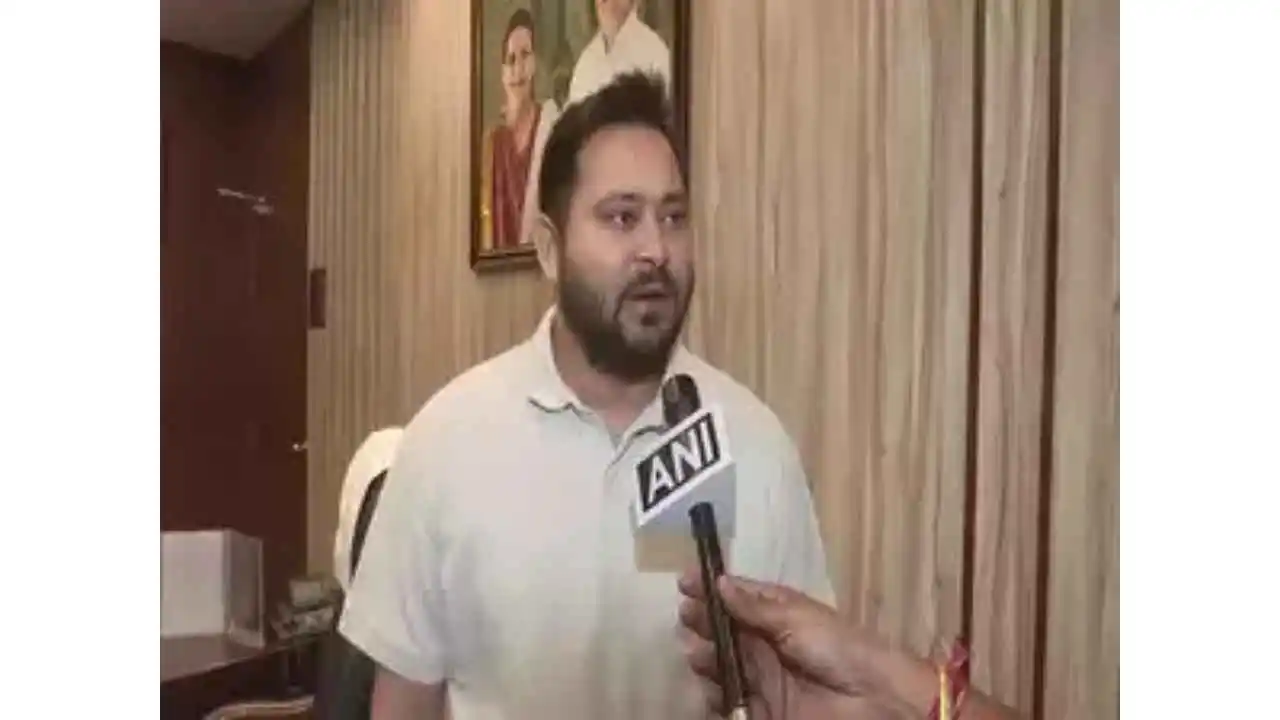
After the first phase of the Lok Sabha election got completed, Rashtriya Janata Dal (RJD) leader Tejashwi Yadav on Saturday took a dig at the Bharatiya Janata Party and said that the BJP’s 400 paar film has become a super flop on the first day itself. The RJD leader told that the media that there is no competition in the first phase of the elections as Bihar will give shocking results this time.
Yadav added that the Mahagathbandhan is winning all 4 seats in the first phase. He said the INDIA Bloc had held block wise meetings and the feedback that has come is very good that the BJP’s 400 paar film has flopped on day 1 of the Lok Sabha elections. He said the people of Bihar are aware and will teach BJP a lesson.
Tejashwi Yadav said there is no competition in the first phase. He said the people of Bihar will give shocking results this time. He added the BJP government has not done anything for the people of Bihar. He said the promises made by Modi ji in 2014 and 2019 were not fulfilled. Yadav added the public is tired of BJP’s statements and false promises. He said the opposition has promised that they will give a special package to Bihar along with special status.
Tejashwi Yadav said today the rally is with Rahul Gandhi ji in Bhagalpur. The entire INDIA Bloc and the Mahagathbandhan are working together. The RJD leader pointed out that unemployment is the biggest issue in Bihar. He said other important issues being faced by the people of Bihar are poverty, inflation, investment in the state. He said Migration and floods are also issues which need to be looked at. He added the people of BJP are very worried. He said the people of BJP say that they will abolish the Constitution. He said those who destroy the Constitution will themselves be destroyed.
2024 Lok Sabha Elections
Prime Minister Narendra Modi takes dig at Rahul Gandhi, says like Amethi, Congress will lose its ground from Wayanad also
PM Modi is currently on a visit to Maharashtra for election campaigning, and is campaigning for Mahayuti’s candidates from the parliamentary seat of Nanded Prataprao Patil Chikhlikar.
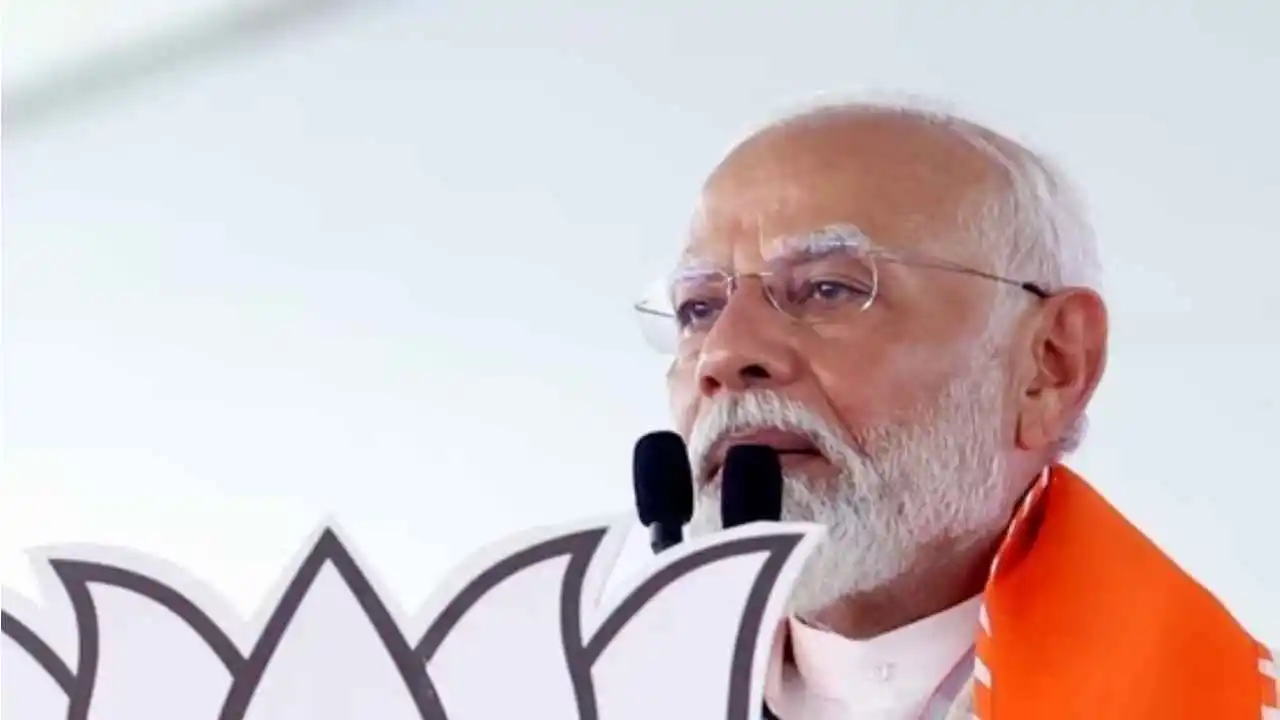
Prime Minister Narendra Modi on Saturday made a prediction and said Congress leader Rahul Gandhi will be driven away from his parliamentary constituency Wayanad and the party will have to find another safe seat for him. PM Modi, at a rally in Maharashtra’s Nanded, said Rahul Gandhi was chased away from Amethi by BJP leader Smriti Irani. PM Modi is currently on a visit to Maharashtra for election campaigning, and is campaigning for Mahayuti’s candidates from the parliamentary seat of Nanded Prataprao Patil Chikhlikar.
The Prime Minister said Congress ke shehzade, unhe bhi Wayanad mein sankat dikh raha hai…Jaise Amethi se bhagna pada, aap maan ke chaliye wo Wayanad bhi chodenge… (The Prince of Congress is facing a danger in Wayanad. Like he was made to escape Amethi, believe me, he will have to leave Wayanad as well).
PM Modi added Kerala Chief Minister Pinarayi Vijayan has blasted Congress leader in such a language that even he did not use for them. He said he is sure Congress will look for another safe seat for its Shahjada after voting in Wayanad is over. He claimed that in the first phase of the Lok Sabha elections, the people of the country voted for the BJP-led NDA. PM Modi said the INDIA bloc partners were fighting each other for 25 percent seats. He said if this is the situation now, what will they do after the election?
PM Modi addressed all the workers and leaders of other parties and said even if they felt that they are going to lose the elections then why should they work hard- he said they should work hard for democracy. Aaj nahin toh kal, kal nahin toh parso, parso nahin toh narso, arey kabhi to mauka aega (if not today, tomorrow, day after tomorrow, someday, you may get a chance).
2024 Lok Sabha Elections
Lok Sabha Elections: Voter turnout 62.02% in Tamil Nadu till 5pm
The voter turnout in Tamil Nadu stands at 62.02%, while Uttar Pradesh records a turnout of 57.5%. Meanwhile, in West Bengal, voter participation surges to 77.5% as of 5 pm.
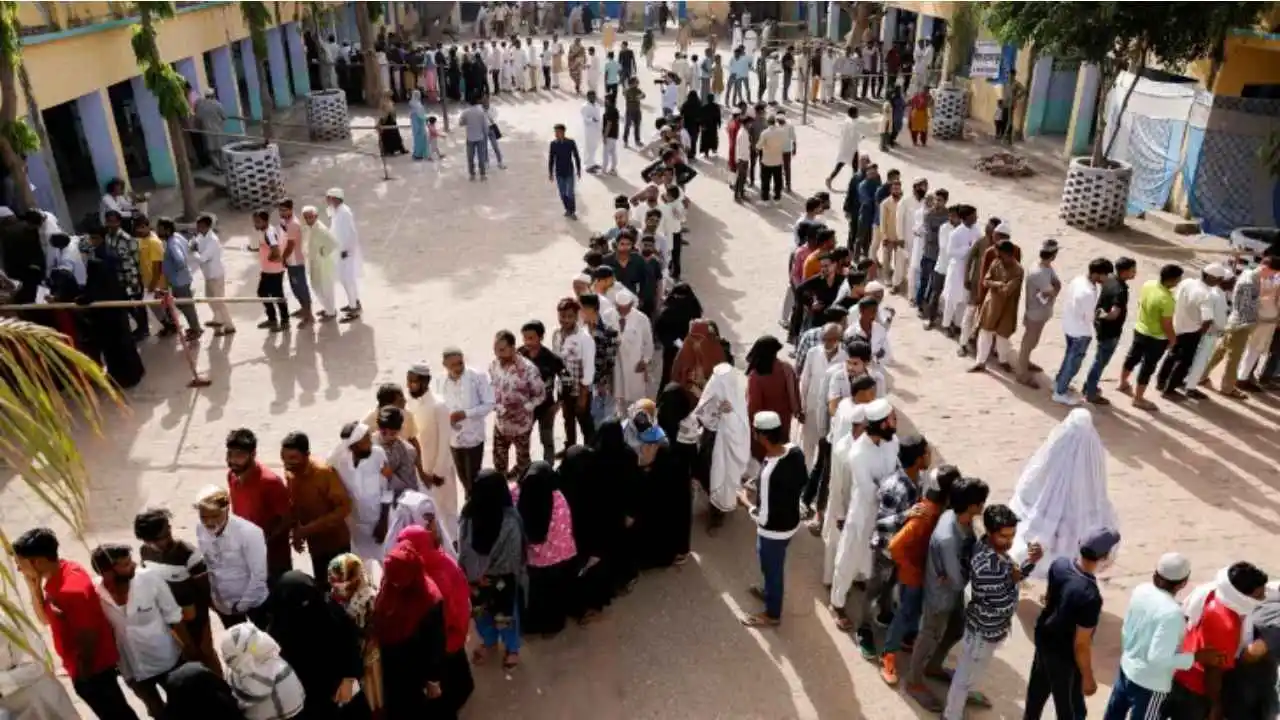
The Lok Sabha elections 2024 began today, marking the onset of the world’s largest electoral event. Voting ended in all 39 Lok Sabha constituencies in Tamil Nadu with a total voter turnout of 62.02%. State BJP chief and Coimbatore Lok Sabha constituency candidate K Annamalai said, they were getting complaints from a large number of voters that their names were missing from the voters’ list.
This incident happened in many places. Annamalai said they are demanding re-poll in places where the names of a large number of voters were missing.He said they had a doubt that there was some political interference because the names of a large number of BJP caders were missing from the voters list.
The voters in South Chennai showed lukewarm interest to participate in the election process and had a total voter turnout of 57.04% till 5pm. Although the overall percentage is poor, some areas like Thiruvanmiyur witnessed brisk polling from 7am onwards. Elderly, middle aged and young voters turned up and it was a family outing for many as they cast their vote.
Corporation volunteers assisted senior citizens with wheelchairs and guided them to their respective polling booths. The hot weather also had an impact on the polling as it reduced the voter turnout as many booths in the corporation school in MGR Nagar were seen deserted around noon. Senior citizens showed courage as they reached the polling booths in private vehicles to exercise their franchise.
Most of the polling booths had shamianas for voters so that they could wait in a queue. Some people even found refuge in the nearby buildings to save themselves from the scorching heat. The polling officials gave instructions to the voters to keep their phones switched off while they exercised their franchise. The security personnel at the polling booth also regulated traffic outside the polling booth in MGR Nagar.
-

 Entertainment24 hours ago
Entertainment24 hours agoDo Aur Do Pyaar social media review: Social media users say Vidya Balan, Pratik Gandhi deliver standout performances in this adorable film
-
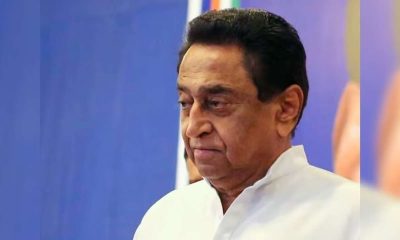
 2024 Lok Sabha Elections21 hours ago
2024 Lok Sabha Elections21 hours agoDeserted by key supporters, the Kamal Nath story looks set to wind to an end in Chhindwara
-

 Entertainment22 hours ago
Entertainment22 hours agoAditya Roy Kapur, Sara Ali Khan’s Metro In Dino to release this November
-
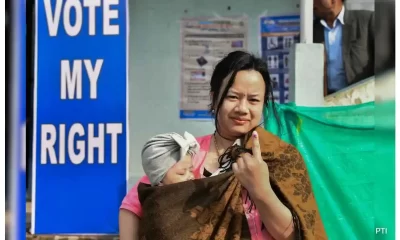
 2024 Lok Sabha Elections23 hours ago
2024 Lok Sabha Elections23 hours agoLok Sabha Elections 2024: Nearly 40% voter turnout till 1pm
-
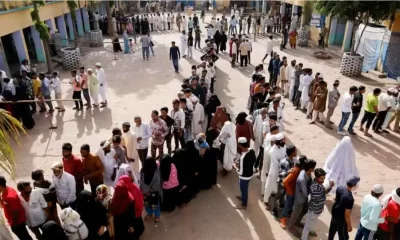
 2024 Lok Sabha Elections19 hours ago
2024 Lok Sabha Elections19 hours agoLok Sabha Elections: Voter turnout 62.02% in Tamil Nadu till 5pm
-

 Featured21 hours ago
Featured21 hours agoNima Sulaiman joins HiLITE Group Board, her father gifts her a Porsche
-

 Food21 hours ago
Food21 hours agoSocial media users stumped after food vlogger makes blue-coloured ghee rice, video viral
-

 Cricket news3 hours ago
Cricket news3 hours agoIPL 2024: Lucknow Super Giants beat Chennai Super Kings by 8 wickets

